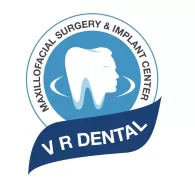Smile Designing – The most important part of your smile is your teeth.
Are they straight?
Are they a light ivory, a dirty yellow, or a glistening white?
Are your teeth symmetrical, or do you have some oddly shaped or damaged ones?
Do some of them protrude unattractively?
Do you like your smile now?
Can your smile be improved?
Think about how you react to someone with a pretty smile. Do you find them more attractive?
Will you be more attractive with an appealing smile design?
How much gum are you showing when you smile?
Are your gums a light, healthy pink or a deep, inflamed red?
Do your gums overlap your teeth too much, or are they receding?
Want to look younger. A smile design can take years off of your appearance.
WHAT IS A SMILE DESIGN?
Orthodontic treatment will make your smile look fabulous. The fabulous smile will last for the rest of your life. Think about how a fabulous smile will improve your life. Orthodontic treatment will also make your face look delightful.
- I do not like the idea of having my teeth ground for smile design. A. The necessary space to accomplish the treatment objectives by Restorative Space Management is gained through the reduction of existing tooth substance rather than shifting the teeth orthodontically.
- How much reduction of my teeth is needed? A. The shade, shape, and position of the tooth will determine the amount of reduction we need in order to achieve the desired result.
- Why are you recommending orthodontic movements in my case rather than restoration? A. No restorative material is equal to the healthy tooth structure and (regardless of the time taken, skill employed, or material used) a restoration cannot duplicate the beauty of the natural dentition.
The goal of an aesthetic makeover is to develop a peaceful and stable masticatory system, where the teeth, tissues, muscles, skeletal structures, and joints all function in harmony (Peter Dawson). It is very important that when planning treatment for aesthetic cases, smile design cannot be isolated from a comprehensive approach to patient care. Smile Designing Achieving a successful, healthy and functional result requires an understanding of the interrelationship among all the supporting oral structures, including the muscles, bones, joints, gingival tissues, and occlusion Harmonizing an aesthetic smile requires the perfect integration of facial composition and dental composition. The facial composition includes the hard and soft tissues of the face. The dental composition relates more specifically to teeth and their relationship to gingival tissues. A smile designing should always include the evaluation and analysis of both facial and dental composition.
Facial beauty is based on standard aesthetic principles that involve proper alignment, symmetry, and proportion of the face. Analyzing, evaluating and treatment planning for facial aesthetics often involve a multidisciplinary approach which could include orthodontics, orthognathic surgery, periodontal therapy, cosmetic dentistry, and plastic surgery. Thus, an aesthetic approach to patient care produces the best dental and facial beauty. But in our clinical practice, unless and otherwise there is an obvious discrepancy in the face, we restrict our smile makeover to the dental composition only.
There are two facial features that do play a major role in the smile design: 1. the interpupillary line and 2. lips. The interpupillary line should be perpendicular to the midline of the face and parallel to the occlusal plane. Lips are important since they create the boundaries of smile design. If we come across major discrepancies in the abovementioned two factors, then we have to seriously consider the correction of the facial composition, before we venture into the correction of the dental composition. smile designing
In classical terms, the horizontal and vertical dimensions for an ideal face are as follows:
- Horizontal:
- The width of the face should be the width of five “eyes”. • The distance between the eyebrow and chin should be equal to the width of the face.
- Vertical:
- The facial height is divided into three equal parts from the forehead to the eyebrow line, from the eyebrow line to the base of the nose, and from the base of the nose to the base of the chin. • The full face is divided into two parts, eyes being the midline. • The lower part of the face from the base of the nose to the chin is divided into two parts, the upper lip forms one-third of it, and the lower lip and the chin two-thirds of it.
The basic shape of the face when viewed from the frontal aspect can be one of the following: 1. Square 2. Tapering 3 Square tapering 4. Ovoid
The lateral profile of an individual can be any one of the following: 1. Straight 2. Convex 3. Concave
These factors play a role in determining the tooth size, shape, and lateral profile; in short, the tooth morphology is dependent on the facial morphology. smile designing Balance, symmetry, and proportion are essential to creating the perception of beauty and harmony in objects viewed as aesthetic. The concept of beauty and its correlation with nature and mathematics was a central theme in the development of the “golden proportion.” Attributed to Phidias in ancient Greece over 2000 years ago, it has been believed by many to possess mystical powers. smile designing Leonardo da Vinci denoted the presence of the golden proportion in his book of illustrations depicting the human body. The golden proportion occurs when the length of two objects has a special relationship in which the proportion between the shorter to the length is the same as the proportion of the length to the sum of the shorter plus the longer. The proportion in which this occurs is 0.618:1 or 62%. The golden proportion has been observed to Teeth contribute an important part to one’s appearance. A person’s appearance and more importantly self-perception of his own appearance have a vast influence on his confidence. The primary objectives of cosmetic dentistry are to attain the best possible aesthetic results and at the same time preserve the hard and soft tissues. Porcelain laminates are among the best aesthetic modality to achieve a more pleasing and beautiful smile and are a good conservative alternative to full crowns for the treatment of discolored teeth. The tooth preparation for a full-coverage crown may alter the existing incisal guidance, proximal contacts, overall tooth morphology, food flow pattern, and phonetics of the patient In the modern practice of dentistry, it is no longer acceptable to just repair individual teeth. Increasingly more patients are demanding a final appearance that is not only physiologically and mechanically sound but also aesthetically pleasing. In addition to restoring and reconstructing the broken down dentition, bleaching, bonding, and veneering have opened the doors to a wide variety of elective dental treatments to enhance appearance, often reversing the visual signs of aging. Follow us for more updates.
WHO IS A CANDIDATE FOR A SMILE DESIGNING?
- Want to look younger. A smile design can take years off of your appearance.
- Want to have a more confident smile.
- That cares how they look and wants to make an investment into their dental health
- That wants to improve their chances for career advancement or success. It is a known fact that 74% of adults feel that an enhanced smile will allow for a more successful career
- That takes care of their teeth with regular dental checkups and good dental hygiene.
Principles of smile design
1] Symmetry, Color, and Straightness
Depending on the circumstances, any of these issues can be resolved with the assistance of an Invisalign , or by pursuing teeth whitening or porcelain veneers. In some severe cases of malocclusion, you may need to consider surgery; but with modern technology on your side, most of the issues can be corrected within a year or two using less invasive measures.
2] Gum Health and Lip Shape
Your smile isn’t all about your teeth. The soft tissues of your mouth and lips also have their role to play. How much gum are you showing when you smile? Are your gums a light, healthy pink or a deep, inflamed red? Do your gums overlap your teeth too much, or are they receding? Good oral hygiene is key to keeping your gums healthy and your lips hydrated; but if you’re struggling with serious aesthetic issues, you may need the help of a dentist. Gum grafting, laser gum reshaping, and other techniques can help you achieve a more attractive and balanced smile. If your teeth are protruding, they can make your lips stick out or force your mouth into a crooked shape; so once you fix that issue, your lips can assume a more natural, symmetrical position.

